How to detect ChatGPT-generated text is one of the most important skills for content creators, educators, and publishers in 2025.
As generative AI tools like ChatGPT become essential for scaling content production, they also raise red flags for SEO systems, academic institutions, and quality-conscious readers.
This guide explores the most effective ways to identify AI-written content and the top detection tools available today.
It also breaks down Google’s latest EEAT content guidelines and shows how Undetectable AI helps transform machine-generated text into content that sounds genuinely human, ranks better, and passes every detection test.
Key Takeaways
- AI detection relies on patterns like predictable phrasing, low perplexity, and burstiness—not absolute certainty.
- Multiple detection tools (e.g., AI Detector, Copyleaks, GPTZero, Wordvice, Origin Checker, SynthID) provide varied accuracy—cross-checking is recommended.
- Google’s 2025 EEAT (Experience, Expertise, Authoritativeness, Trustworthiness) guidelines require AI-generated content to include human voice, factual integrity, author attribution, and genuine perspective.
- Undetectable AI transforms text to human-like quality, helping bypass detectors and meet EEAT and SEO expectations efficiently.
- Detecting AI content remains complex due to evolving models, watermarking limitations, and the delicate balance between automation and authenticity.
What Is ChatGPT (and Why It Matters)
ChatGPT, introduced in 2022 by OpenAI, is a large language model (LLM) based on the Generative Pre‑trained Transformer architecture.
Since its launch, the model has evolved—GPT‑4 arrived in March 2023—now enabling not just text generation, but image recognition and human‑like speech.
It’s embedded across multiple platforms, including Microsoft Teams and Bing, thanks to Microsoft’s strategic partnership with OpenAI.
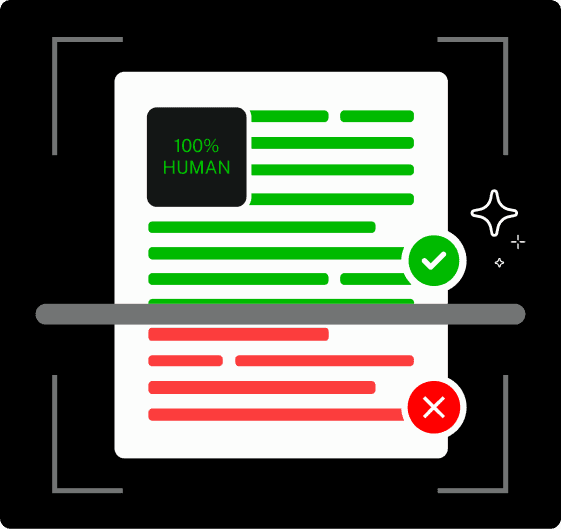
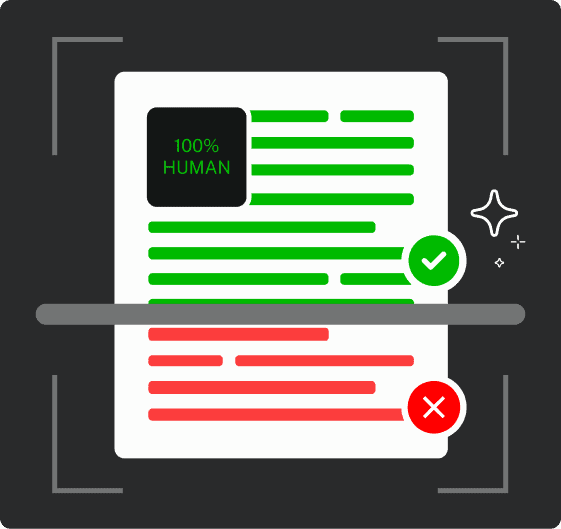
Never Worry About AI Detecting Your Texts Again. Undetectable AI Can Help You:
- Make your AI assisted writing appear human-like.
- Bypass all major AI detection tools with just one click.
- Use AI safely and confidently in school and work.
Although ChatGPT can rapidly generate polished copy, it often lacks human nuance or originality—motivating the need for both detection and “humanization” workflows like those provided by Undetectable AI.
How to Detect ChatGPT Yourself
If you want to assess text without automated tools, start by carefully reading and evaluating for subtle linguistic cues:
- Evaluate Tone & Variation: AI writing frequently relies on neutral, “safe” phrasing and similar sentence lengths. A lack of tone shifts or emotional variance can be a signal.
- Watch for Over-Used Transitions: When paragraphs feel overly tied together by repetitive connectors (“furthermore,” “moreover”), AI may be at play.
- Check Descriptive Depth: Human authors naturally include anecdotes, sensory details, or expert perspective—elements often missing in AI text.
- Test for Hallucinations: Fact-check claims, historical dates, or quotes. AI-generated content can present convincing—but incorrect—information as if factual.
- Area for Internal Deep Dive: Our Undetectable AI blog post “Spotting AI Patterns in Writing” dives into practical red flags and examples—check it out for a guided walkthrough.
Can You Really Detect ChatGPT Text?

Yes—but not always completely. Current tools can assess the probability that text was AI‑generated, though none guarantee absolute certainty.
Detection typically hinges on linguistic patterns such as perplexity (complexity) and burstiness (sentence variation), rather than identifying the specific LLM used.
GPTZero uses these metrics, for instance, to differentiate human versus AI writing.
Meanwhile, at Google I/O 2025, the new SynthID Detector offers enhanced detection by tracing watermark cues embedded in AI-generated content—capable even of identifying AI artifacts across text and media formats.
Why AI‑Generated Text Detection Matters
- Preserving Trust & Credibility: In academic, journalistic, or professional contexts, knowing whether content is human-written ensures integrity and reader trust.
- SEO & Ranking: Google emphasizes original, human-authored content under its EEAT framework. Text that appears machine-generated may suffer ranking penalties.
- Preventing Misinformation: Hallucinations and inaccurate AI outputs can disrupt informed decision-making. Detection encourages necessary human review.
- Academic and Ethical Standards: Schools, publishers, and businesses rely on detection to uphold fairness, authenticity, and accountability in content creation.
Signs ChatGPT‑Generated Text May Exhibit
Even without detection tools, human editors can often detect subtle clues:
- Robotic Tone & Repetitive Phrasing: AI tends to default to neutral phrasing and may repeat ideas in different wording.
- Lack of Personal Voice or Real‑World Examples: AI-generated content often omits firsthand insights or anecdotes—a deficiency penalized by search engines.
- Hallucinated Facts or Inaccuracies: AI sometimes invents plausible-sounding errors that require fact-checking.
- Uniform Sentence Structure: Excessive use of transitions and similar-length sentences are red flags.
- Shallow Originality: Text may be technically well‑written but lacks nuance, depth, or argumentative insight.
Top AI‑Detection Tools of 2025
As generative AI becomes more sophisticated, detecting machine-written content is no longer optional—it’s essential.
Whether you’re a teacher verifying academic work, an editor maintaining publication standards, or a business protecting your brand voice, reliable detection tools are critical to keeping AI use transparent and ethical.
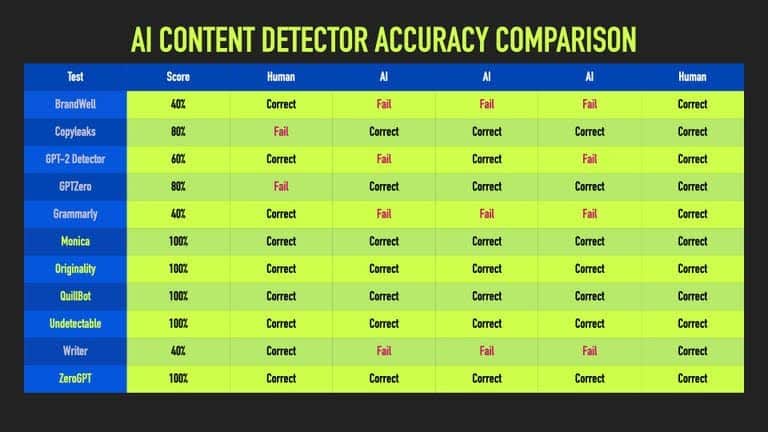
Below are those widely used tools—listed in your specified order—with concise, reader‑friendly summaries.
Undetectable AI
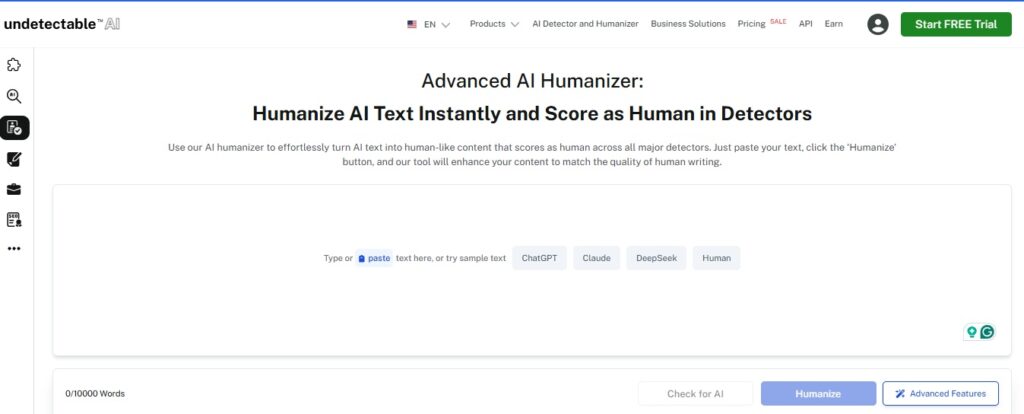
- Identifies likely AI-generated patterns using deep linguistic analysis
- Humanizes content instantly to match natural writing styles
- Offers advanced tools for both detection and remediation in a single workflow
- Trusted by over 7 million users across education, SEO, and enterprise use cases
Undetectable AI stands out by not just flagging AI-written content—but fixing it.
It allows users to humanize robotic or overly polished text without compromising meaning or tone.
Its ability to support detection, correction, and compliance makes it ideal for teams who need both oversight and output in one platform.
According to ZDNet’s 2025 review of the top AI content detectors, Undetectable AI was recognized not only for its detection accuracy, but also for its unique ability to instantly humanize content in a single workflow—setting it apart from other tools in the space.
Launching an AI-focused service or content tool?
Our Undetectale AI’s Business Name Generator helps you instantly brainstorm creative, brandable names that capture your niche and make your product stand out in a crowded AI market.
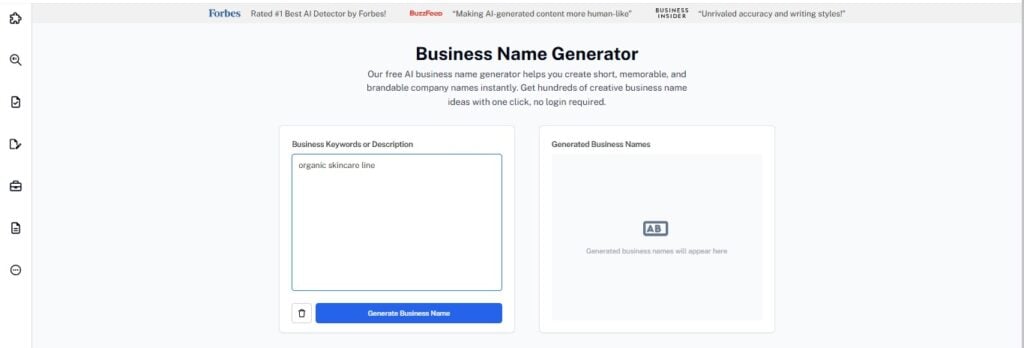
TruthScan
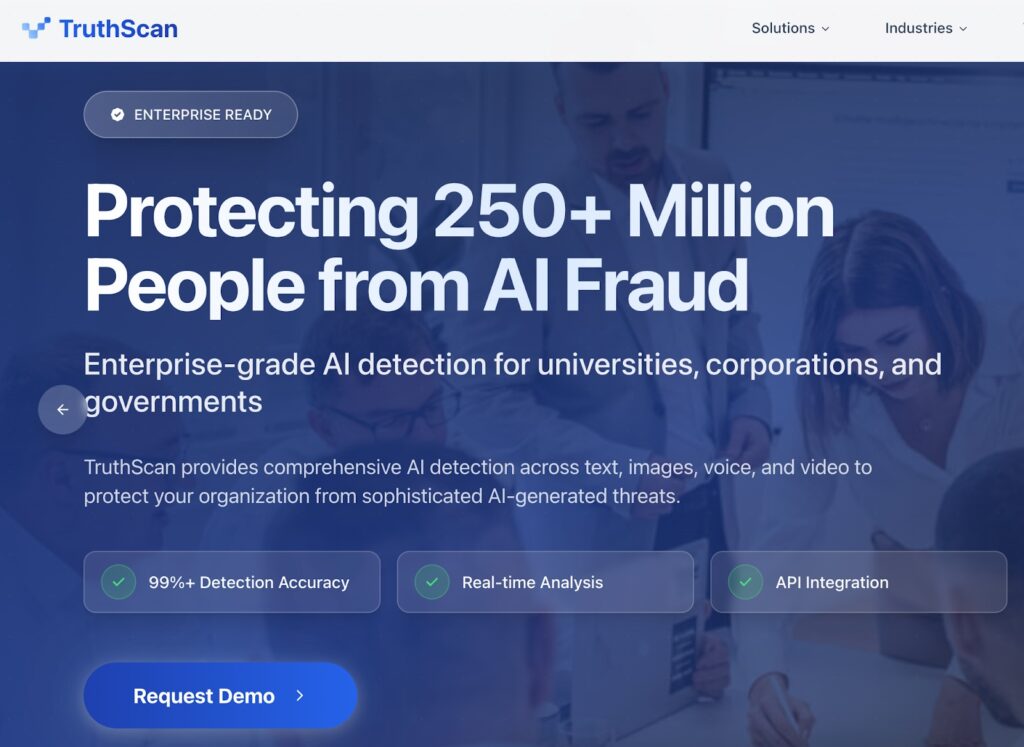
- Pinpoints AI-influenced paragraphs, sentences, and phrasing
- Delivers line-by-line analysis with color-coded confidence scoring
- Designed specifically for institutions that require documented proof of AI detection
- Integrates with educational and editorial systems for seamless reporting
TruthScan offers transparent, forensic-level detection for users who need to understand exactly which parts of a text may have been generated by AI.
With its precise scoring and granular breakdown, it’s ideal for schools, publishers, and organizations where evidence-based evaluation is key.
Google’s 2025 EEAT Rules: What Creators Need to Know
Google’s updated E‑E‑A‑T framework—Experience, Expertise, Authoritativeness, and Trustworthiness—has become a cornerstone of modern SEO in 2025.
While AI-generated content is no longer explicitly penalized, it must convincingly reflect human perspective and insight to perform well in search rankings.
Content that includes real-world experience, author attribution, or expert commentary is now favored over anonymous, machine-like outputs.
Google’s algorithms increasingly reward pages that demonstrate editorial care, accuracy, and originality.
Fact-checking is critical. If your AI-generated content contains unsupported claims or so-called hallucinations, it may be flagged by both search engines and readers, negatively impacting visibility and trust.
Likewise, engagement metrics—like dwell time, click-through rates, and reader interaction—are being factored into ranking signals more than ever before.
Even technical elements, such as the use of author schema, internal linking strategies, and well-structured UX, now contribute to how trustworthy and authoritative your content appears to both Google and users.
Ultimately, Google’s EEAT isn’t about avoiding AI—it’s about elevating AI-assisted content through human oversight, authenticity, and quality.
By pairing AI tools like ChatGPT with platforms like Undetectable AI, which help humanize and optimize content, creators can meet these standards efficiently without sacrificing output.
Challenges in Detecting AI‑Generated Text
Despite the progress of AI detectors in 2025, accurately identifying AI-generated content remains a complex and evolving task.
As language models like GPT‑4 Turbo, Claude 3, and Gemini Ultra become more advanced, they generate increasingly human-like text—making detection more difficult than ever.
Many detectors still rely on statistical models that can be easily outmaneuvered by paraphrasing tools, rewriting software, or advanced prompting techniques.
On top of that, inconsistencies in watermarking standards and detection accuracy introduce further complications.
Here’s a closer look at the most persistent challenges facing both human reviewers and detection tools:
- Rapid Model Evolution: Next-generation models are advancing rapidly, often outpacing the training data and capabilities of existing detectors. This leads to gaps in detection accuracy, especially for newly released LLMs.
- Watermarking Limitations: While some AI systems like Google’s SynthID have introduced watermarking, many models still don’t embed detectable signatures in their outputs—making content nearly impossible to trace without manual context clues.
- False Positives / Negatives: AI detectors can misclassify sophisticated human writing as AI-generated or overlook subtle AI-produced content, especially when hybrid workflows or paraphrasing tools are involved.
- Workload & Cost: For organizations producing high content volumes, the cost of frequent scans—especially using premium detection tools—can add up quickly. Manual review is also time-consuming and labor-intensive.
- Overlap in Style: Academic, technical, or highly formal human writing often mirrors the structured, neutral tone typical of AI outputs. This stylistic similarity further complicates detection efforts, particularly when content lacks anecdotal or personalized elements.
For content that may already include hidden AI watermarks or identifiers, Undetectable AI’s AI Text Watermark Remover offers a simple way to clear those embedded traces.
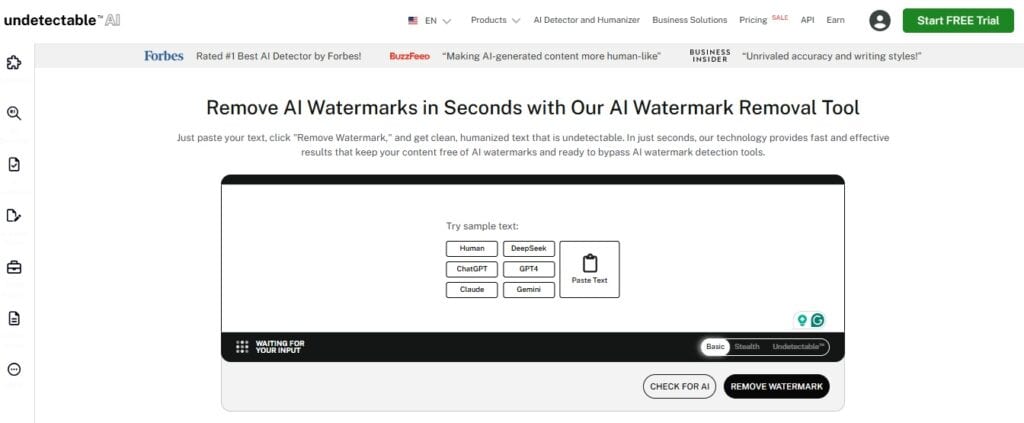
It helps restore text to a neutral, natural form, allowing editors and reviewers to assess authenticity without interference from invisible AI-generation signals.
Full-Spectrum Verification with Deepfake Detection
As AI extends beyond text to generate hyper-realistic images and videos, verifying authenticity now requires more than linguistic analysis.
Our Undetectable AI’s Deepfake Detection complements text-based tools by analyzing visual and multimedia content for signs of manipulation.
It inspects pixel structures, lighting consistency, and facial motion to uncover deepfakes or synthetic visuals that may appear authentic to the naked eye.
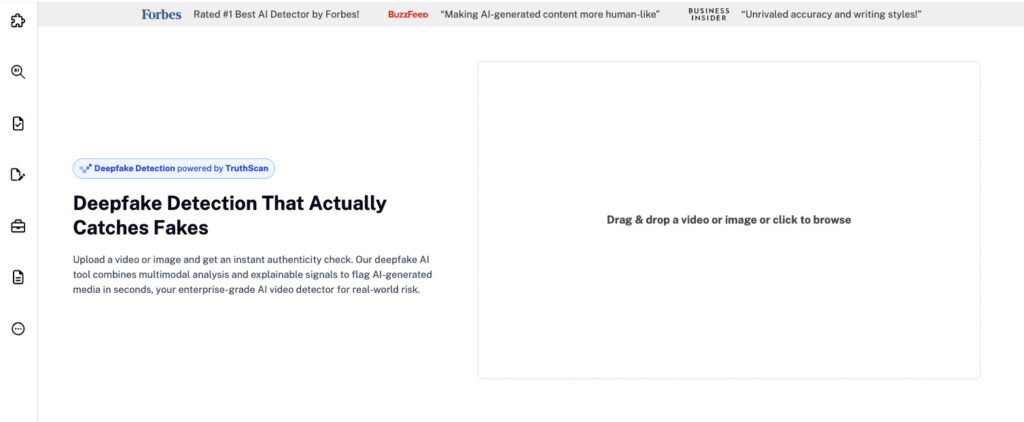
When used alongside AI text detectors like TruthScan or SynthID, Deepfake Detection gives creators, educators, and publishers a complete authenticity framework, ensuring both written and visual content meet the highest standards of truth, trust, and transparency.
As AI voice models become more capable of cloning speech with near-perfect accuracy, questions around who owns synthetic voice outputs have become just as important as those surrounding text or images.
If your team works with audio content, interviews, or spoken submissions, try our Undetectable AI’s AI Voice Detector to check whether a clip was generated or altered by an AI system.
The tool analyzes vocal patterns, cadence, and acoustic fingerprints to help you confirm authenticity and avoid copyright or ownership issues linked to voice-synthesized material.
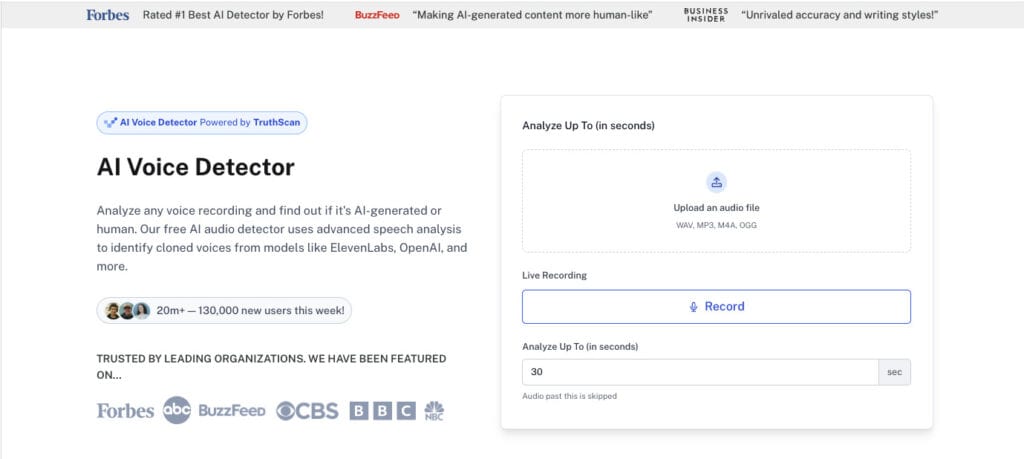
How Undetectable AI Enhances Your Content
Creating AI-assisted content in 2025 requires more than just speed—it must pass detection tools, satisfy Google’s EEAT standards, and feel genuinely human to the reader.
Undetectable AI provides specialized tools that help you transform, optimize, and protect your content in an AI-saturated digital landscape.

AI Detector and Humanizer: Instantly scans and rewrites AI-generated content to sound authentically human while evading top detectors like GPTZero and Copyleaks. It ensures your content maintains clarity, complexity, and tone variety.
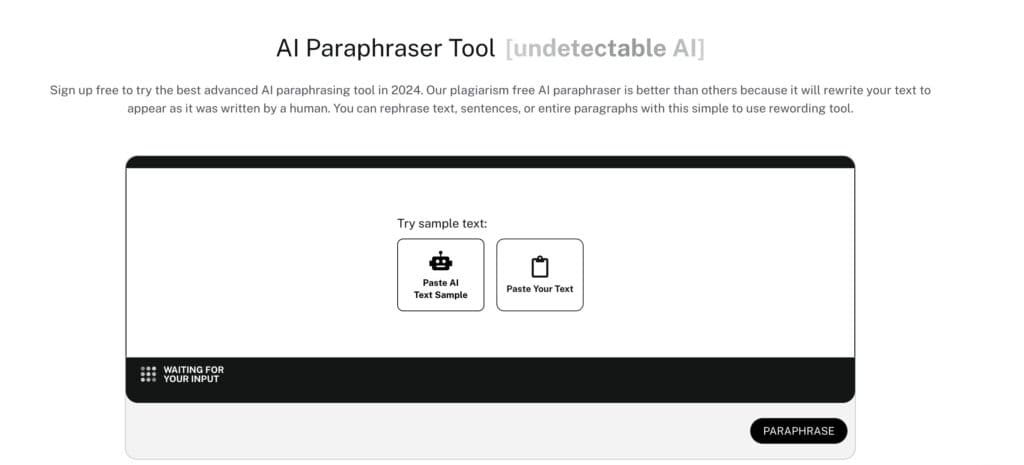
AI Paraphraser: Rephrases robotic or repetitive AI output into more natural, expressive, and reader-friendly language that aligns with SEO and EEAT guidelines.
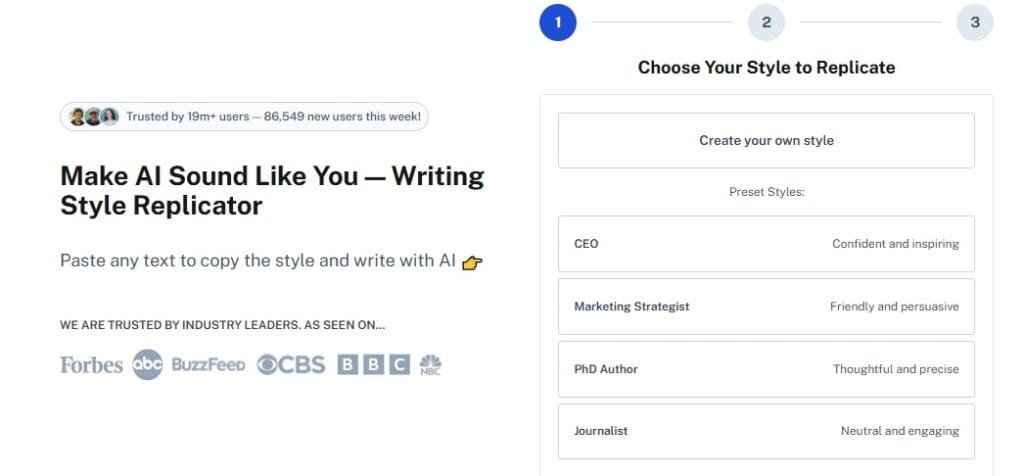
Writing Style Replicator: Adapts any content—AI or human-written—to match your personal tone and voice, ensuring consistency and authenticity that detection tools can’t flag.
Access our trusted AI Detector and Humanizer using the widget below.
FAQs
Can AI detectors definitively pinpoint ChatGPT text?
No detector is infallible. They estimate likelihood based on pattern analysis; tools like SynthID add watermark detection—but no tool can claim perfect accuracy.
Are free tools reliable?
Free tools such as GPTZero and Sapling can help with basic detection, but their accuracy is often limited.
Undetectable AI offers a more advanced alternative, trusted by educators and businesses for its precision and ability to humanize AI-generated content in one workflow.
How does EEAT affect AI content ranking?
AI content must be human-reviewed, fact-checked, authored with credibility, and source-rich to align with EEAT and perform well in search results.
What if content contains factual errors (“hallucinations”)?
Always implement human review and fact-checking, especially for high-stakes topics—AI tends to generate plausible but incorrect information confidently.
How is Undetectable AI different from paraphrasing tools?
Unlike simple paraphrasers, it humanizes tone, improves originality, and integrates SEO/EEAT signals for better detection resistance and search positioning.
Conclusions
In 2025, AI-generated writing is everywhere—but so are detection tools and heightened SEO expectations.
While AI helps scale content production, human oversight remains essential to ensure authenticity and ranking ability.
Tools like Undetectable AI, TruthScan and the new SynthID Detector provide powerful detection capabilities.
Meanwhile, Google’s EEAT framework demands that AI-generated or AI-enhanced content delivers genuine value, credibility, and user trust.
Undetectable AI bridges this gap—transforming AI-generated copy into human-grade content that passes detectors, aligns with EEAT, and delivers real reader value. For creators demanding both speed and substance, it remains an invaluable ally.
Start humanizing with Undetectable AI now.
